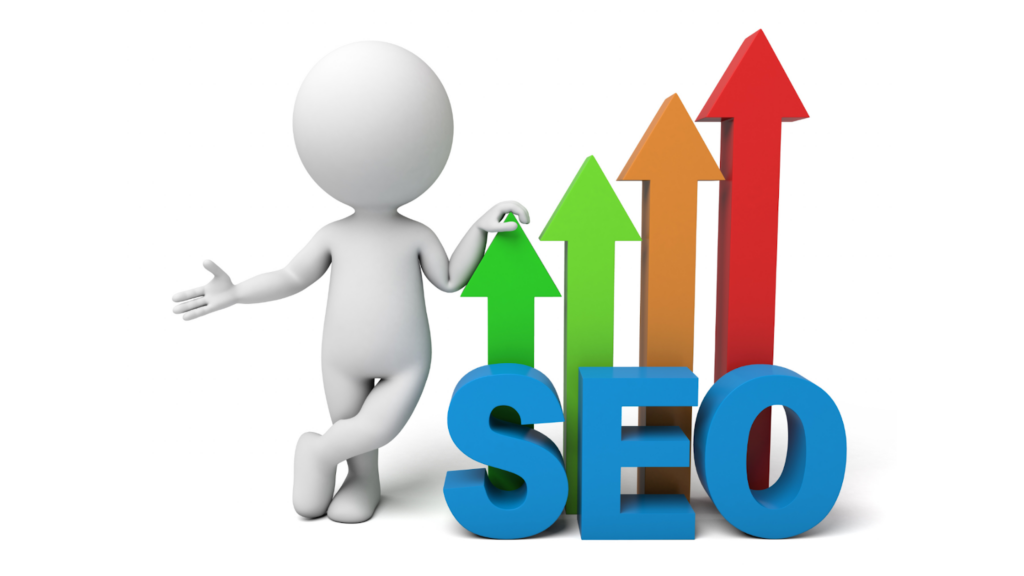Last updated - November 17, 2023
Are you one of the millions of businesses still using Magento 1 and trying to figure out when and how to make the jump over to Magento 2? You aren’t alone, as hundreds of merchants have gone through this process before. With such a significant migration in cost, time, and effort, it’s essential to plan ahead by understanding the changes associated with an upgrade from M1 to M2.
In this post, we will discuss what is involved in making this transition along with an estimated timetable for completion so that businesses can create a successful Magento 2 Migration Plan for 2023. Read on to find out more!
What is Magento 2? And What are its Benefits — In Brief


Magento 2 is a powerful and flexible content management system (CMS) that allows you to create beautiful websites. The platform allows you to build your site from scratch or migrate existing sites, including features like e-commerce, blogging, forums, image galleries, and more. With Magento 2 CMS, you can easily manage your site’s content and design elements, as well as add new features if needed.
Magento 2 is based on the Magento 1 framework, which is a free, open-source PHP framework. Therefore, to construct a website using Magento 2 CMS, you can also use MasterBundles graphic products to make your site look more attractive and professional with great visuals. The following are some of the benefits of using Magento 2 CMS:
- Cost-effective: No license fees or subscriptions are required. Users only need to pay for web hosting if they don’t already have it.
- Easy installation: Simple installation process does not require specialized skills, making it ideal for first-time users without experience in content management systems.
- Easy customization: Magento 2 CMS can be customized by adjusting settings and adding new features. Various plugins, such as adding social media icons, are also available to further customize the site.
Magento 2 CMS is an intuitive, powerful content management system designed to help you create beautiful and functional websites in no time. It uses the Twig templating engine for PHP for advanced features like page templates, layouts, user roles and permissions, menus and navigation, taxonomies, content blocks, widgets, shortcodes, and much more.
Why you Should Migrate to Magento 2 in 2023!
Magento 2 was released in 2015 after two years of development and is now used by millions of merchants to build their eCommerce stores. The platform has been a popular choice for e-commerce over the years, but with the new release of Magento 2 in 2023, it looks set to revolutionize the entire e-commerce industry.
The reason why you should migrate to Magento 2 is that it has many features that can help you grow your business and make it more profitable. Here are some of them:
Improved UI


Magento 2 has a completely redesigned user interface (UI) that makes it easier for customers to navigate through your store. Magento 2 also supports the possibility of integrating professional templates on your website. The new UI also includes several tools that allow you to personalize the look and feel of your store so that it matches your brand’s aesthetic.
Improved Performance
Magento 2 also comes with improved performance, which means that your store will load faster than before. This is especially important if you sell products through mobile devices or if you have a large number of customers visiting your store at once (like during Black Friday).
Improved SEO Ranking


With Magento 2, you can take advantage of enhanced SEO ranking capabilities to get more traffic and visibility from popular search engines such as Google and Bing. This way, you can improve your website’s ranking and receive more visitors than ever before.
Better Security
With the ever-growing demand for online businesses, security is now even more critical. Magento 2 provides superior protection than ever before with two-factor authentication, password strength controls, and regular security patches.
Mobile-friendly


It’s also designed to be mobile-friendly, so no matter what device your customers are using, they can shop on your site without any problems. Take advantage of Magento 2 and give customers an effortless shopping experience on any device.
Better Integrations
Integrating with Magento 2 has become simpler and more efficient thanks to improved API documentation and better integration with third-party extensions. This makes adding new features easier, boosting your eCommerce website’s capability.
Factors that Affect the Magento Migration Cost in 2023
The Magento Migration Cost in 2023 comprises the total cost of migrating Magento data to the new environment. This cost includes:
- The cost of migrating the data from on-premises systems to cloud storage; this is known as the migration component.
- The cost of maintaining the data in the cloud once it has been migrated; this is known as the maintenance component.
- The cost of using cloud services during the migration period; this is referred to as the operational component.
However, what are the factors which affect the migration to Magento 2 in 2023? Let’s discover it below!
Website Size
The size of your website is one of the most critical factors that affect the cost of Magento migration. The larger and more complex the website, the higher the cost will be. For example, websites with hundreds or thousands of products and pages often require a greater amount of time to migrate and will thus incur a higher cost. Additionally, if your website uses a wide variety of plugins or extensions, the cost of migration will also increase.
A large website with many plugins will require extra time and resources to ensure a successful migration. To reduce the cost of Magento migration, you should consider downsizing your website before migrating. This can be done by reducing the number of product pages and images, as well as removing any unnecessary plugins and extensions. Taking these steps can help to reduce the amount of time needed for migration, thus reducing costs.
Hosting and Server


The choice of what kind of hosting and server you go with will affect the cost, as more powerful hardware can require larger investments. It is important to accurately estimate your needs so that you don’t overspend or underspend on hosting and servers.
Customization and Extensions
When migrating to Magento, it is essential to take into consideration any existing customizations and extensions as part of the process. These customizations and extensions must be ported over, tested, configured, and adjusted for them to work properly after the migration is completed. If not accounted for, this could result in increased costs due to developers needing to rewrite or fix errors manually after the migration has taken place.
In some cases, they may need to be rewritten to match Magento’s architecture, and in other cases, they can simply be ported to the new platform. How much effort is required for this process will depend on the complexity of these customizations and extensions and therefore should be taken into account when estimating the Magento migration cost in 2023.
Theme and Design


This can increase the cost substantially, as it requires more time and expertise. Additionally, if your design gets complex or uses a lot of custom elements, then this will also add to the cost of migration. Furthermore, design is an important factor to consider when estimating migration costs for 2023. Therefore, you can explore the graphic design blog to find a theme & design that will be suitable for your budget in migrating to Magento 2.
Tips to Reduce Magento 2 Migration Cost
We all know that migrating from a closed-source solution to an open-source one is more than just a technology switch. It has wider effects that affect your organization. Nevertheless, the information below covers some of the tips you can use to reduce migration costs!
Plan the Budget Ahead
The budget for a Magento 2 migration is one of the most important aspects to consider when planning the project. To help keep costs under control, it is essential to plan ahead and create a clear budget that accounts for every expense associated with the migration. This includes any customization or new functionality that needs to be added during the transition as well as any additional services such as training and support.
Besides, it is important to factor in any cost associated with resolving any issues that may arise during the migration process. By planning ahead and knowing what expenses to expect, organizations can avoid unnecessary costs and keep their Magento 2 migration project within budget.
Limit Customization and Use Magento 2 Extensions
Customization is excellent for creating a unique store design, but it can increase the cost of migration from Magento 1 to Magento 2. It’s important to decide which customizations are necessary and which ones are not before beginning the migration process. When possible, select existing Magento 2 extensions instead of developing custom solutions – they will save time and money.
Consider the cost of ongoing support for any customizations used in the new store once it is launched. Choosing Magento 2 extensions over customization can help reduce migration costs and provide a better long-term experience for your customers.
Simplify Design and Customization
Migrating your eCommerce store to Magento 2 can be expensive, depending on the complexity of the existing website. To reduce migration costs, simplify design and customization. This means reducing any unnecessary customizations that require additional coding or configuration changes.
Focus on streamlining the customer’s journey by making sure navigation is easy and intuitive, and by avoiding design elements that can be confusing or interfere with the user experience. If possible, use standard themes, colors, fonts, and other visual elements throughout the site so that there is uniformity in the look and feel of the store.
For customizations, opt for extensions or plugins as opposed to hard coding, as they are more cost-effective and easier to implement. When it comes to the data migration process, use automated tools that can transfer data quickly and accurately with minimal effort.
How Much Does it Cost to Migrate to Magento 2 in 2023?
Migrating to Magento 2 in 2023 can be a major undertaking, with potential costs depending on the scope of the project. Depending on the size and complexity of your store, migrating could cost anywhere from $300 — $2000 to a few thousand dollars up or even tens of thousands. Factors that will influence the cost include whether you need custom programming or extra features; the number of products, customers, or orders you have to migrate; and any necessary design work.
If you want an accurate estimate for your Magento project, it is best to consult a certified Magento developer. They’ll be able to provide a more detailed cost analysis after they understand the scope of the work involved. If you need some extra information in powering your store using Magento, then Learnwoo is ready to help you! Their blog has a lot of useful articles on the subject of Magento so you can be sure to get the best result you can.
To Sum Up Magento Migration Cost in 2023
So, it’s no surprise that Magento 2 migration costs remain high – a complex undertaking requiring financial investment and time to execute. Businesses will have to factor in the cost of recruiting an experienced Magento resource and extra development needs should they decide to migrate. Ultimately, it is worth the money because a successful implementation could potentially open up unlimited opportunities for businesses to expand their presence and serve more customers faster.
The bottom line is that companies need to be prepared for the costs and invest in the right system for their business growth. Magento 2 will undoubtedly be a great solution if you are looking for scalability, security, customer experience, and performance speed. With proper planning and support from Magento experts, you can use this comprehensive platform to maximize ROI.











